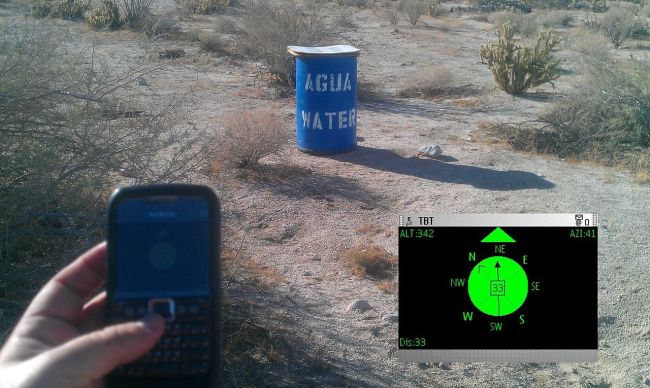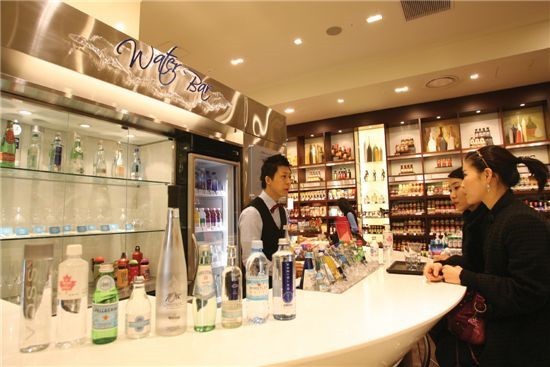 |
“Trans-border Migrant Tool” by Electronic Disturbance Theater 2.0 helps Mexican immigrants to find the location of water using the GPS-installed mobile device when they cross the border through the harsh desert. |
Hundreds of Mexican immigrants die in their deadly crossing across the Mexican and the U.S. border every year. Non-governmental organizations estimate that more than 10,000 people have died so far before they make it to the border.
Some of them die without water in the blazing desert that spreads across Arizona, California and Mexico. A team of media artists and researchers Electronic Disturbance Theater 2.0/b.a.n.g lab came up with a mobile device installed with GPS in 2005 to help them search for water and survive.
The mobile devices are being shown at the exhibition “Waterscapes: The Politics of Water” at the Kumho Museum of Art. Borrowing the word “Waterscapes,” first coined by Indian anthropologist Arjun Appaduri, the exhibition examines the multifaceted subject of water in relation to the increasing global concerns over issues such as water shortage and conflicts, water quality deterioration, unequal distribution of water and corporate control of public water system.
Yun Su-yeon’s documentary video “Miracle” shows a different picture ― drinking water becoming a luxury. The video explores the emerging trend of drinking water that it is classified as a luxury drink depending on quality and taste. She notes the consumption of the artic glacial water served to VIPs in membership-based sports clubs or water bars where water sommeliers serve customized water for customers.
 |
“Miracle” by Yoon Su-yeon explores the origins of luxury drinking water sold at membership-based sports clubs and water bars. (The Kumho Museum of Art) |
The striking contrast of two works leaves viewers with questions, one being ― what does water mean to us today?
Designer and social activist So Won-young chronicles water-generated conflicts and wars around the world from B.C. 3,000 to the present. On the rotating planet, So indicates the conflicts and wars in color graphs, which gradually increase as we approach the 20th and 21st century. It becomes more frequent and spreads to every continent after the 21st century. The artist details causes of the small and large conflicts on another map, indicating the locations and brief stories of water-related violence.
Artists dig in to reveal the exploitation of water by global corporates and environmental damages in Africa and Southeast Asia.
Chilean artist Alfredo Jaar installed 55-gallon metal barrels filled with water and projected images of local residents living in the coastal town of KoKo in Nigeria onto the surface of water. The 1991 installation refers to the incident that took place in 1987 and 1988 when Italian companies dumped toxic waste in the port city. The toxic hazard contaminated the environment and water and led to diseases.
Indian and Vietnam artists look at the shortage of water experienced by local farmers due to the establishments of soft drink factories by Pepsi and Coca-Cola. Their videos ask viewers: Who owns the right to water in the region and can anyone claim the right to water resources?
Israeli and Palestinian artists focus on the use of water as one of primary reasons that create tension and conflict between two states. They produced nine short movies about daily episodes of residents and political conflicts surrounding the distribution of water and electricity.
The exhibition recasts the Maldives pavilion of the 2013 Venice Biennale, which presented the Maldives archipelago under the theme of “Portable Nation.” The videos and films show the influence of climate change on the small resort islands and daily life of Maldivians in the city of Male outside the islands’ luxury resorts.
The exhibition continues through Dec. 14 at the Kumho Museum of Art in Samcheong-ro, Jongno, Seoul. It will move to the Pohang Museum of Steel Art to be shown from Jan. 15 to March 29. For more information, (02) 720-5114.
By Lee Woo-young (
wylee@heraldcorp.com)









